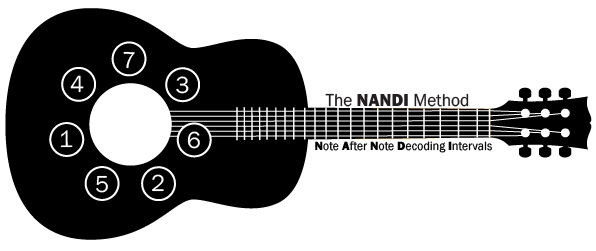The Dim7 chord is symmetrical in nature, as the chord intervals are a minor third apart.
From the root to the third the interval is a minor third (m3). From the third to the fifth we have another minor third. Lastly, from the fifth to the seventh lies our last minor third, making the chord formula (R –♭3 –♭5 –♭♭7). ♭♭7 (double flat seventh) is the same as a 6.
Let’s analyze Cdim7.
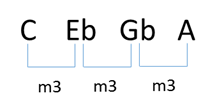
The notes of this chord are C – E♭– G♭ – B♭♭ (A). As we can see, the notes are a minor third apart from each other.
In first inversion, the notes in this chord are E♭ – G♭ – A – C. Each of these notes are a minor third apart. This chord is also a Cdim7 in first inversion (third in the bass) and E♭dim7 in root position.
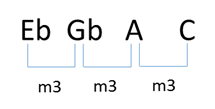
If we invert it once more, we get Cdim7 in second inversion, which is the same as E♭dim7 in first inversion and G♭dim7 in root position.
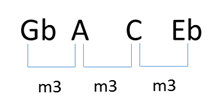
Repeating the process one more time, we get Cdim7 in third inversion, which is the same as E♭dim7 in second inversion, G♭ dim7 in first inversion, and Adim7 in root position.

Finally, we get back to Cdim7 in root position, which is the same as E♭dim7 in third inversion, G♭dim7 in second inversion, and Adim7 in first inversion.
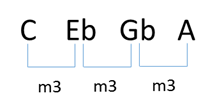
In summary, we can say that:
Cdim7 Root = Adim7 1st = G♭ dim7 2nd = E♭ dim7 3rd
E♭ dim7 Root = Cdim7 1st = G♭ dim7 3rd = Adim7 2nd
G♭ dim7 Root = Cdim7 2nd = E♭ dim7 1st = Adim7 3rd
Adim7 Root = Cdim7 3rd = E♭ dim7 2nd = G♭ dim7 1st
Intervals for each dim7 voicing is listed in the table below. Notice the descending thirds in each column. In column 1 for example, intervals 1 – 6 – ♭5 – ♭3 correspond to the lowest note in the four diminished chords. With the NANDI method, the shortcut that can be applied here is that when the roots move up in minor thirds (C-E♭-G♭-A), the intervals in each of the four voices move down a minor third in order to achieve good voice leading. Yet another example is the top note in each voicing descending in minor thirds (♭3-1- 6-♭5). The interval pattern in each inversion is :TT-min3-TT
Tritones: 1-♭5, ♭3-6, ♭5-1, 6-♭3
Minor thirds: 1-♭3, ♭3-♭5, ♭5-6, 6-1
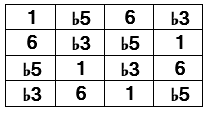
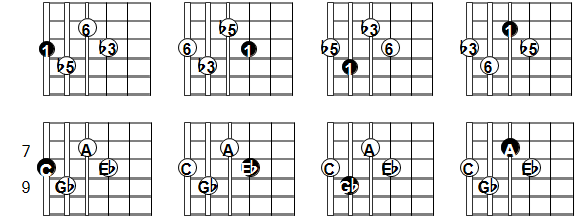
Once again Cdim7, E♭ dim7, G♭ dim7 and Adim7 are exactly the same chord. It is accurate to say that there are only three dim7 chords in a chromatic scale: Cdim7, D♭dim7, and Ddim7. All of the other chords are inversions of these three.
Below, you can see these diminished chords across the entire fretboard.
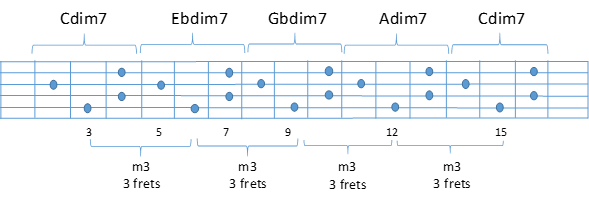
Observe how the chord repeats itself every three frets with the exact same shape, regardless of the inversion.
